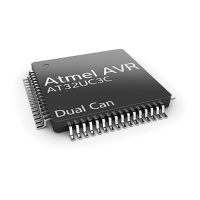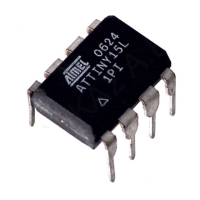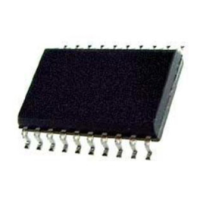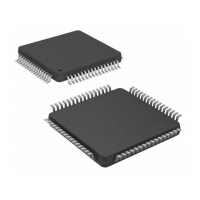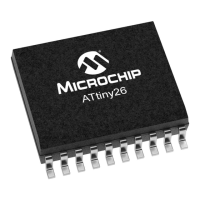415
8331B–AVR–03/12
Atmel AVR XMEGA AU
32. Program and Debug Interface
32.1 Features
• Programming
– External programming through PDI or JTAG interfaces
Minimal protocol overhead for fast operation
Built-in error detection and handling for reliable operation
– Boot loader support for programming through any communication interface
• Debugging
– Nonintrusive, real-time, on-chip debug system
– No software or hardware resources required from device except pin connection
– Program flow control
Go, Stop, Reset, Step Into, Step Over, Step Out, Run-to-Cursor
– Unlimited number of user program breakpoints
– Unlimited number of user data breakpoints, break on:
Data location read, write, or both read and write
Data location content equal or not equal to a value
Data location content is greater or smaller than a value
Data location content is within or outside a range
– No limitation on device clock frequency
• Program and Debug Interface (PDI)
– Two-pin interface for external programming and debugging
– Uses the Reset pin and a dedicated pin
– No I/O pins required during programming or debugging
• JTAG interface
– Four-pin, IEEE Std. 1149.1 compliant interface for programming and debugging
– Boundary scan capabilities according to IEEE Std. 1149.1 (JTAG)
32.2 Overview
The Program and Debug Interface (PDI) is an Atmel proprietary interface for external program-
ming and on-chip debugging of a device.
The PDI supports fast programming of nonvolatile memory (NVM) spaces; flash, EEPOM, fuses,
lock bits, and the user signature row. This is done by accessing the NVM controller and execut-
ing NVM controller commands, as described in ”Memory Programming” on page 431.
Debug is supported through an on-chip debug system that offers nonintrusive, real-time debug.
It does not require any software or hardware resources except for the device pin connection.
Using the Atmel tool chain, it offers complete program flow control and support for an unlimited
number of program and complex data breakpoints. Application debug can be done from a C or
other high-level language source code level, as well as from an assembler and disassembler
level.
Programming and debugging can be done through two physical interfaces. The primary one is
the PDI physical layer, which is available on all devices. This is a two-pin interface that uses the
Reset pin for the clock input (PDI_CLK) and one other dedicated pin for data input and output
(PDI_DATA). A JTAG interface is also available on most devices, and this can be used for pro-
gramming and debugging through the four-pin JTAG interface. The JTAG interface is IEEE Std.
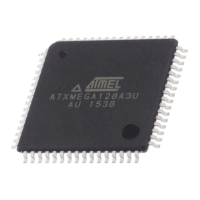
